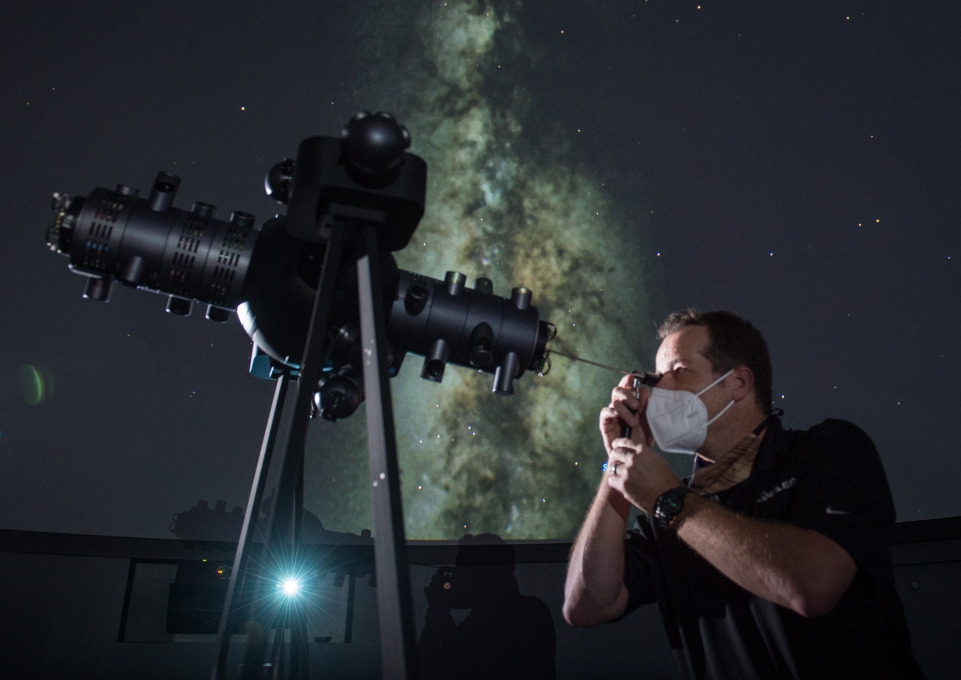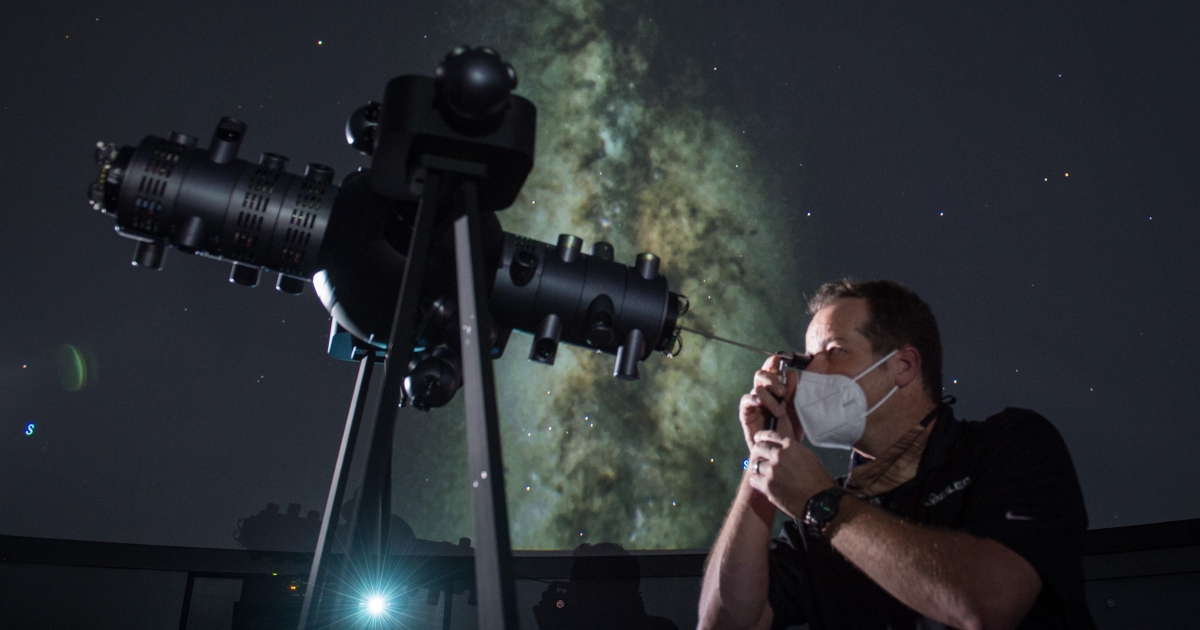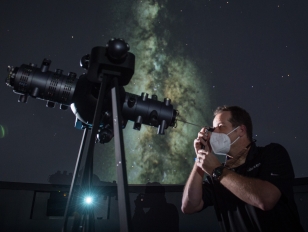
When the new Whitworth Ferguson Planetarium is up and running in the Science and Mathematics Complex, astronomy won’t be the only subject shown on its domed ceiling.
Through conversations with more than 30 faculty and staff members, Kevin Williams, director of the Whitworth Ferguson Planetarium and associate professor of earth sciences and science education, is working to expand the benefits of the planetarium across the campus community.
“The sky is not the limit,” he joked.
Williams came up with the idea to open the planetarium beyond astronomy after listening to President Katherine Conway-Turner’s annual Opening Year Address last fall, in which she stressed the need to “ignite innovation” on campus. The planetarium presents the chance to do just that.
Williams has launched the INNOVATE project—which stands for Incorporating New and Novel Opportunities in Visualizations, Arts, Technology, and Education—to encourage cross-disciplinary collaborations beyond the planetarium’s traditional use for astronomy education. He is soliciting ideas for new ways to use the projection systems and possibilities for joint ventures with faculty, staff, and students. Virtual informational meetings will take place early in October. Anyone who is interested but has not yet signed up can contact Williams.
The new state-of-the-art software and projection systems being installed in the planetarium present a number of opportunities for other disciplines, including such diverse areas as dance, theater, art, music, technology, communication, history, education, all the sciences, and more. There are countless possibilities to provide 360-degree visually immersive experiences for students, Williams said.
“It’s a resource we will be using as much as possible.”
Possibilities for collaboration include providing earth sciences students with the ability to see both what’s on Earth’s surface and what’s below it, providing geography and planning students with an immersive weather experience, and opportunities for music students to compose music for laser shows and other projects.
The planetarium could provide a projection space for animation projects in the Art and Design Department, bringing another dimension to the work.
“It’s taking material that is traditionally either shown on a flat screen or in a textbook and presenting it in an immersive environment,” Williams said. “It’s immersive with visuals, and it’s immersive with audio.”
The Weigel Wellness Center could use the planetarium for immersive meditation sessions, as well. The planetarium can be a big recruitment tool for the college, he said.
Williams is also working to involve alumni and the community in the planetarium, once it’s open to the public. The coronavirus pandemic has slowed the installation of the three projection systems needed to run the planetarium, but it’s still on track to be finished later in the fall, with a grand opening to be scheduled. Two of the three projection systems have been installed. The third, the laser projection system, should be installed in the coming weeks.
While trying to open during the coronavirus pandemic has not been ideal, Williams said, the extra time has a sort of silver lining, allowing the kinks to be worked out and allowing those involved to be trained on the complex software systems before it opens.
“When things do get to the point where we can have people in, we’ll be able to hit the ground running,” he said.
The most exciting part for Williams is what’s in store: the uses for the planetarium that will come from collaborating across campus, and those that haven’t even been thought of yet. He’s also thrilled by the opportunity to connect people to astronomy who may not have been exposed to it yet.
“I think there are a lot of opportunities for interdisciplinary and cross-disciplinary collaborations,” he said. “I’m really excited to work with people from the campus community and also from the Western New York community overall!”
Pictured top: Howard George, projection systems engineer with Seiler Planetarium Division.
Photos by Bruce Fox, campus photographer.



